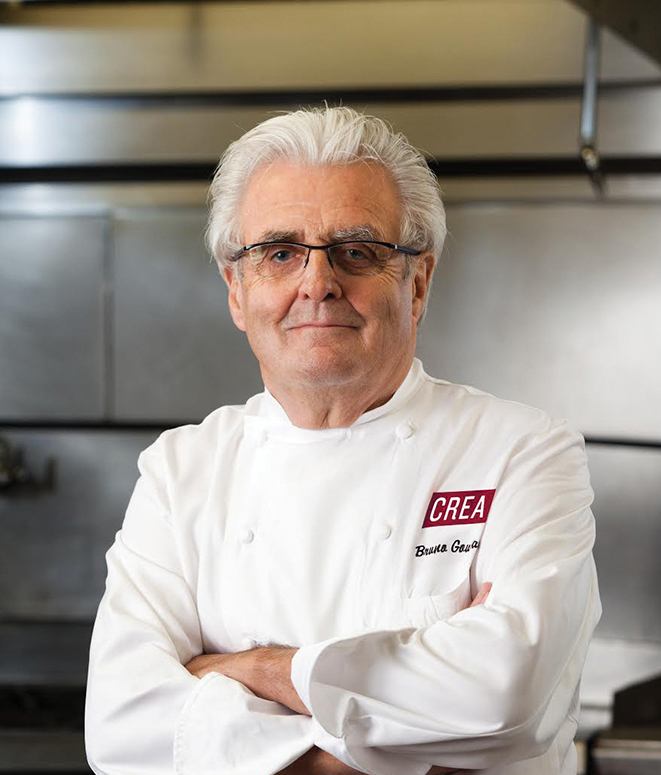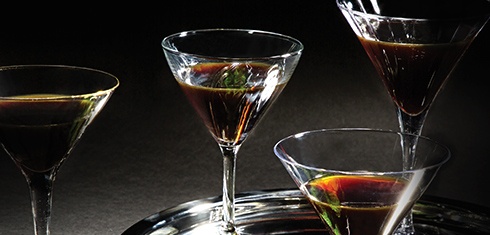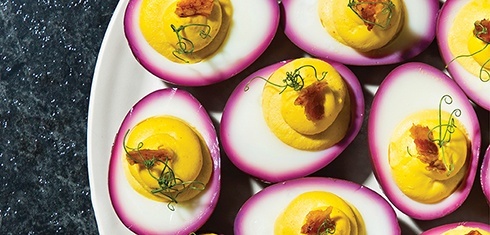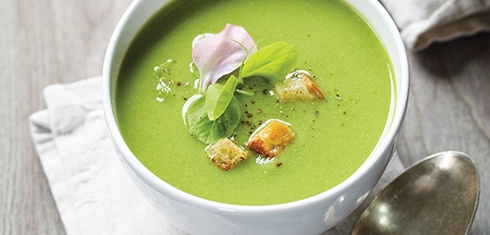Interview by Sara Johnson
SV: When cooking sous vide, why is it important to circulate the water bath?
BG: A simple heater in water is not enough, because the water needs to be in movement to have a very precise temperature. I did an experiment where I had the capability to accelerate the water or have a very low circulation. You can cut the cooking time—the time it takes to reach the core temperature—in half, between low circulation and high-speed circulation. Circulation is important for two reasons: to have the same temperature in a water bath, and move the water around the pouch to accelerate the transfer of heat between water and pouch and between heater and water.
What should chefs look for when buying a circulator?
You need to have a balanced ratio between the power of the heater, the quantity of water, and the quantity of product. For the small circulator that we have in the kitchen today, the power is approximately 1,200, 1,500, or 1,800 watts. That is normal power you need to heat easily between 15 and 18 liters of water to around 133°F (56°C) to 151°F (66°C) to cook fish or meat. And in 15 and 18 liters of water, you can cook 5 kg to 6 kg of food. So one part product, three parts water.
Aside from sous vide, what other advancements are you watching in food science?
Another pressure technique: High Pressure Process (HPP), used for the pasteurization of food products. I like this technique when it’s applied to liquid products, but it’s not correct when used to pasteurize fruits, vegetables, fish, meat, or any products with texture. If you want to kill bacteria, you need to apply pressure to them. It is very easy to kill bacteria in a liquid such as milk or fruit juice. But when you work on a product with texture such as vegetables, fish, or meat, when you apply pressure to a bacteria cell, you also apply pressure to the cell structure in the product. As a result, you have a product without any texture. When I taste scallops that have undergone HPP, it’s a catastrophe because it has no texture and it feels slippery, like soap. If we arrive to have a good extraction of flavor from a product and obtain the appropriate level of cryoconcentration, my dream is to stabilize the cryoconcentration by HPP because it’s a liquid.
What ingredient excites you right now?
It’s not one ingredient, but a kind of ingredient: a functional property extracted from a natural product. I don’t like chemical products put in food for color, for texture, or to retain water. I am a biochemist. For example, everyone uses lecithin from soybeans when they want a foaming product. At CREA, we search for the foaming component within the product, such as casein in milk. You can add more casein to milk, but it’s better to concentrate the existing casein through cryoconcentration, which eventually will increase the emulsifying capacity of milk. You increase the natural functional property with cryoconcentration and afterwards you can use that cryoconcentrated product instead of adding chemicals or additives.
What advancements would you like to see in sous vide equipment in the future?
Two advancements: First, advancements in the skin you need to put around the product to cook sous vide. The skin today is a plastic. A long time ago the skin was a vegetable leaf to bake the product. In delicatessens, they use intestine, stomach, or bladder. My dream is to create a natural skin around the product, using a component of the product. The second thing is to cook sous vide with a piece of continuous-cooking equipment, like a conveyor system. My dream is to put my product in one end of the equipment and when it arrives at the other end, it’s cooked. This new equipment must be able to reproduce the sous vide cooking time and temperature required to achieve the precise temperature in the core of the products.
Have a question about sous vide for Dr. Goussault? Submit your query via email to askthemaster@lecrea.com and you may be featured.
Related Articles VIEW ALL ARTICLES
Chefs & Personalities
Ask the Master: Bruno Goussault on Plastics, Cooling, and more.
Cuisine Solutions’ Chief Scientist Dr. Bruno Goussault discusses safe sous vide plastics, keeping your circulator residue-free, and more.
Read More >Innovations
Cryoconcentration Ups the Flavor Game
Cryoconcentration—reducing by freezing—is an exciting new frontier in food science that opens up a whole new world of flavors.
Read More >Tips & Techniques
Beginner Tips for Your New Circulator
Were you recently gifted with a circulator and are not sure where to begin? Here’s a handful of tips to get started.
Read More >Related RecipesView All Recipes
Cryoconcentrated Coffee Martini
 Beginner
BeginnerThis coffee-infused sous vide cocktail is served decidedly up.
Beet Juice Cryo-Concentrated Deviled Eggs
 Advanced
AdvancedBeet-stained deviled sous vide eggs topped with pork belly bacon add unexpected flair to your entertaining repertoire.
Chilled Very Green Pea Soup
 Beginner
BeginnerCryoconcentrated chlorophyll gives this sous vide soup its bright-green color—and exuberant flavor.




